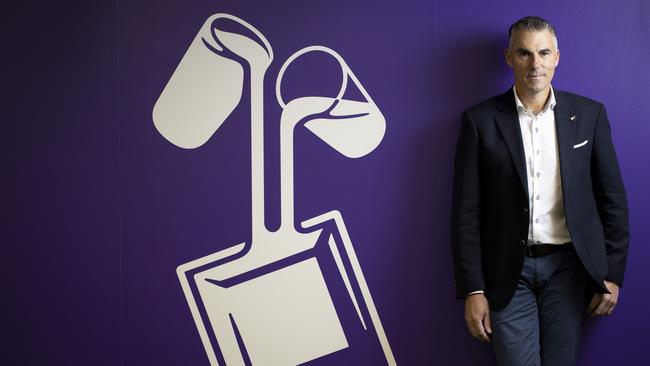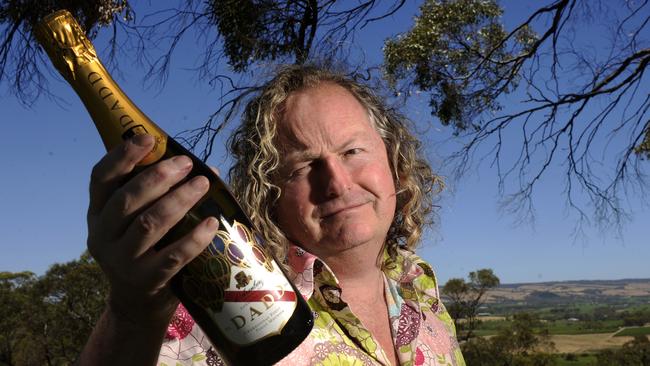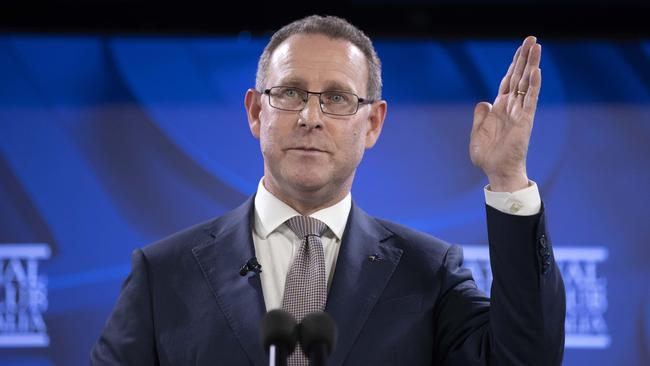Future made in Australia? How about now?
Australian manufacturers are scratching their heads at the Albanese government’s ambitious future aims, as they struggle to cope with the skyrocketing costs of doing business today.

Darren O’Brien was looking over his numbers and came to the shocking realisation that new food allergen labelling laws in Australia – which really only meant creating and affixing tiny new labels to his range of packaged groceries – would cost his manufacturing business at least $5m.
For Mondelez, the global food giant whose brands include Cadbury, Toblerone, Ritz crackers and Philadelphia spread, that might seem small change, but as the boss of Mondelez Australia, New Zealand and Japan, O’Brien and his team needed to work through the costly and time-consuming job of redoing the labels for every single product Mondelez makes.
O’Brien, working out of his corporate offices in South Melbourne, says he believes redoing food allergy labels will cost the entire food manufacturing industry in Australia at least $100m.
“That regulation costs somewhere between $5000 and $10,000 per label and you multiply that by the number of labels that change and you are talking hundreds of millions of dollars across the industry, just to do that plain allergen label. Now you start to think about all the various potential label changes that are being flagged by various health reviews, inquiries, or added sugar labels or rolling out health star ratings – it’s an enormous cost,” O’Brien tells The Weekend Australian.
And don’t get O’Brien started on the cost of reporting on carbon emissions, including scope 3 emissions, which many other countries, including the US, are not mandating to be collected.
“When you start talking about things like scope 3 emissions reporting, companies are going to end up with an army of people whose only job will be to collect, collate and measure that, before anyone even works on actually reducing emissions,” he says.
At McLaren Vale in South Australia, Chester Osborn at his family’s celebrated d’Arenberg winery is worried about the skyrocketing costs in his business, as everything he touches, from the diesel for the tractors, the tractors themselves, fence posts, wine barrels, labour and freight are all going up.
“Everything is more expensive in our business,” Osborn says.
“If you start with the vineyards, diesel is more expensive, the tractors are more expensive, posts and the wire, pruning, labour, and when you look at the winery your power costs are up, fuel costs, gas, and everything you buy like forklifts, barrels, and the corks, is more expensive – as is the labour to do it all.
“Everyone in the wine industry, from the grower, through to the winemakers, are right at the edge of not making it work any more, so it’s pretty tough right now,” Osborn adds.

And in this environment, whether you’re a large multinational like Mondelez or a family business selling wine, its almost impossible to raise prices to recover those bloated costs.
It’s just another bill, another headache, around the rising costs of doing business in Australia that has many manufacturers struggling to stay solvent. And for those that are part of global multinationals – such as Mondelez or Mars – the case for shutting down completely and shifting offshore becomes more compelling.
The cost pressures now facing manufacturers, especially food and grocery companies – businesses that keep people fed – were laid bare at the recent Senate inquiry into the supermarkets, where multinational companies such as Mars, Nestle, Kellanova (owner of Kellogg’s) and Procter & Gamble highlighted the punishing price of operating businesses in Australia.
They outlined runaway energy prices such as gas (used to run their factories) is up 300 per cent, spiking freight and transport bills and swelling wages. Confectionery, snack foods and pet food maker Mars labelled Australia one of the most expensive countries it operates in from its global network of factories. Mondelez has argued the same.
And it shouldn’t be a surprise that many in manufacturing are scratching their heads at the ambitious and lofty aims of the Albanese government’s recently launched $22bn Future Made in Australia policy, pointing to the alarming issue of galloping costs that could mean nothing can be made in the country unless an industry is showered with an unending flow of government subsidies and handouts.
Forget about “made in Australia” in the future, many argue, what about the here and now, as the manufacturing sector faces its own cost-of-living crisis.
“I think the risk is here, we’re putting the cart before the horse,” says Australian Chamber of Commerce and Industry boss Andrew McKellar when asked about the Future Made in Australia policy.
“The message from businesses across the board is about what ‘present made in Australia’. Future made in Australia? Great idea. Of course we want to have new industries developing and growing and we want to be able to take advantage of the opportunities to transition energy in terms of hydrogen or critical minerals. Nobody quibbles with that. But we have present costs in Australian manufacturing and small business which is here and now.
“And to address that we need to be doing the basics. We’ve got to be reducing the impact of regulation, ensuring that our tax system is competitive. You have to make it easier to employ people, easier to generate flexibility and productivity at the enterprise level.
“We’ve had changes in bargaining arrangements, intractable disputes, union delegates rights coming at us and it is harder and harder for businesses to cope with all of these things, and we’ve had a swath of productivity destroying industrial relations, and therein lies the problem.
“So you want a ‘future made in Australia’? You’ve got to start addressing the present challenges as well. That’s one of the missing pieces in the jigsaw puzzle which is we’re not dealing with those fundamentals.”

Mars warned in its submission to a Senate inquiry into supermarkets: “Our Mars Australia manufacturing sites are among the most expensive in the global Mars network. This is attributed to wages, cost of local raw supplies and lengthy supply chains to reach Australia with imported materials and ingredients.”
At Mondelez Australia, which operates seven plants in the country and employs 2050 people directly (and a further 4000 indirectly), O’Brien says it is more expensive in Australia than elsewhere to operate a manufacturing plant.
“On average it’s more expensive, but we have managed – and we are very committed to manufacturing in Australia – and we’ve managed to actually cope with those costs,” O’Brien says.
“But if costs just continue to increase year on year, without any policy frameworks or other settings and give you an ability to drive productivity to offset even the annual increases, you ultimately get to a tipping point where the price you’ve got to charge is more than the consumer is willing to pay.
“I think that’s the concerning part. Consumers are under pressure, we’re seeing (sales) volumes coming off where all companies are talking about, including retailers, the pressure that’s on their volumes. To unlock volume, you are going to need to have more efficient manufacturing in order to be able to contain and ideally reduce costs. But that’s not something that you would see on the current horizon.”
O’Brien warns that many international manufacturers could start to question if it’s viable any more to stay in Australia.
“It’s not necessarily about tomorrow, it’s not even about next year, but when people start to make investment decisions the investment horizon is normally a minimum of 10 years,” he says.
“So for big capital projects you are going to be looking at a 10, 20-year framework and people are not going to make those decisions if they cannot see a pathway to greater efficiency and a cost environment that enables them to sell products at the right price.
“Then you start to look at trade-offs, which is ‘where else can I manufacture? Where else could that be done more cheaply?’ Now it may not be about closing plants, but ultimately when a plant gets to the end of its useful life, the investment to replace it won’t be in this market.”
What is the 10-year plan from the nation’s leaders, he asks.
“Politicians particularly also need to not just look at the next year or the next two years or whatever the budget or electoral cycle is, but what is the 10-year plan?” he says. “That’s what businesses are going to be looking at to give them the confidence to invest, to expand, to grow and to believe they can be more competitive producing in this market than a better alternative.”






To join the conversation, please log in. Don't have an account? Register
Join the conversation, you are commenting as Logout